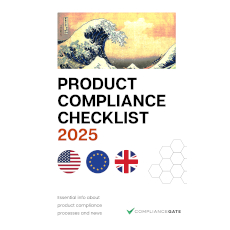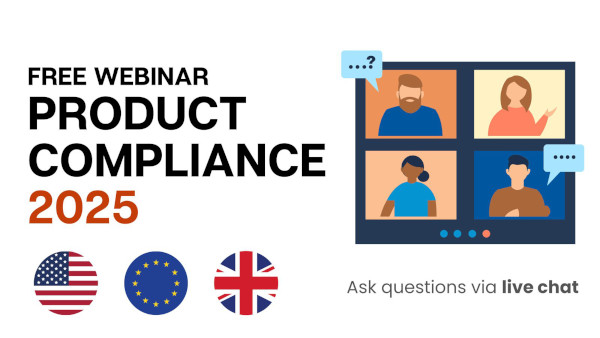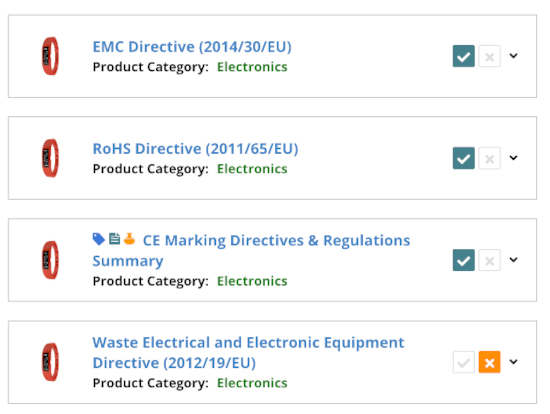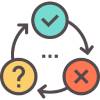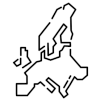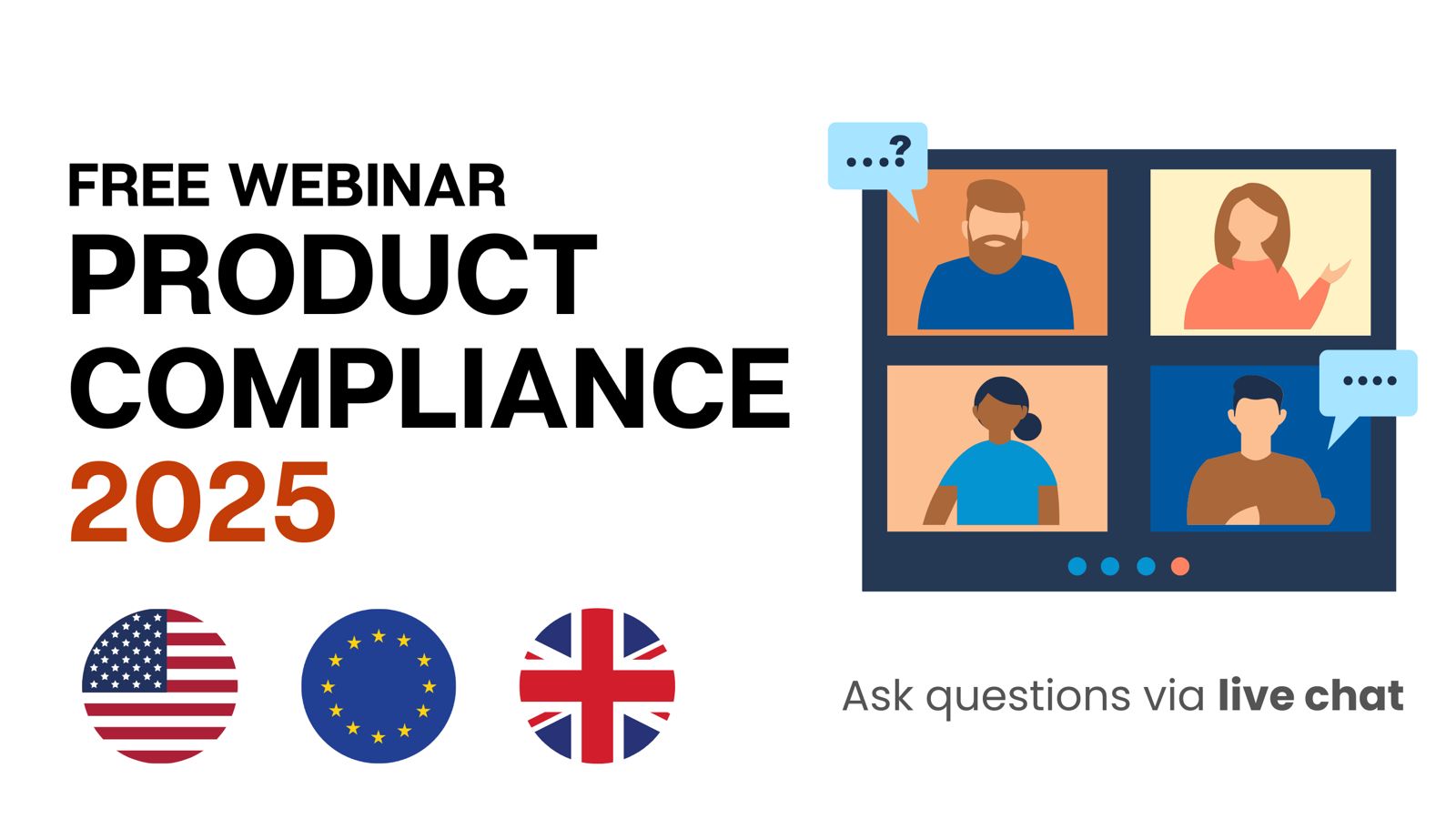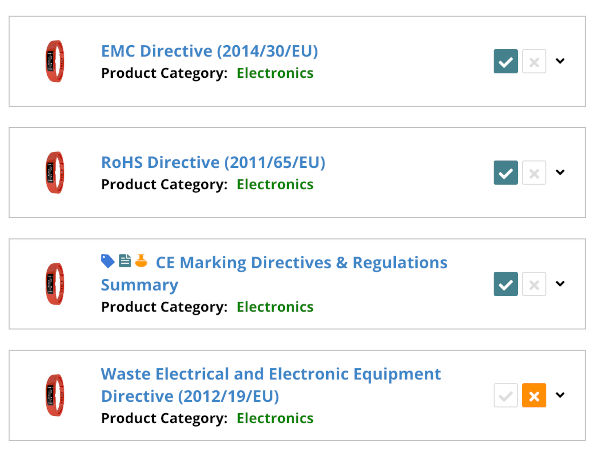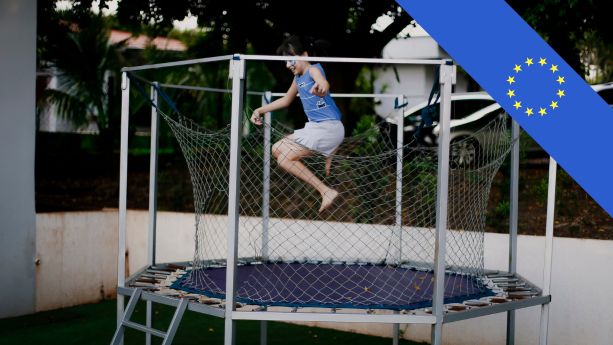
Trampolines imported or manufactured in the European Union are subject to various regulations and standards, as well as requirements regarding testing, labelling, and documentation. Ensuring compliance is crucial as unsafe trampolines can result in life-threatening injuries.
In this guide, we explain how the requirements in directives and regulations such as the Toy Safety Directive and the General Product Safety Regulation apply to different types of trampolines in the European Union.
Content Overview

FREE CONSULTATION CALL (US, EU & UK)
- Request a free 30-minute call with Ivan Malloci to learn how we can help you with:
- Find product requirements
- Certification and labeling
- Lab testing
Toy Safety Directive
The Toy Safety Directive establishes safety requirements for toys intended for children aged under 14. This includes activity toys, such as trampolines, which are meant for domestic use and feature a stationary support structure meant for a child to jump on.
Other types of trampolines, such as gymnastic trampolines, are covered by the General Product Safety Regulation.
The Toy Safety Directive generally requires importers and manufacturers to:
a. Ensure their toys are safe for use, by testing against the requirements of relevant standards
b. Create the Declaration of Conformity and technical documentation
c. Provide instructions for the product
d. Properly label the product and its packaging (e.g. CE marking, product traceability information, warning labels)
EN 71-14 – Safety of toys – Part 14: Trampolines for domestic use
EN 71-14 is harmonised under the Toy Safety Directive, and sets requirements and methods for testing domestic-use and one-person trampolines, including their access devices and enclosures. This standard does not cover the following types of trampolines:
- Gymnastic trampolines
- Inflatable and floating trampolines
- Public playground trampolines
- Inclined mat trampoline
- Fitness trampolines (e.g. for medical use)
- Trampolines with additional features (e.g. basketball hoop)
Although we do not have access to the standard text and, thus, we cannot list the exact requirements, we found that some trampolines were recalled for non-compliance with the directive and EN 71-14, due to the fact that the products:
- Had a safety net that was too low, or
- Had a gap between the mat and the padding that was too large, or
- Had other characteristics that made the product unsafe
Note that, in general, you must comply with the requirements of harmonised standards. If you can prove compliance, by providing a valid test report, for example, the product is generally deemed to conform with the safety requirements set by the Toy Safety Directive.
Note that more than one EN 71 part apply to trampolines and other covered products.
Other harmonised standards
Other standards in the EN 71 standard series may also apply to trampolines. Here are some examples:
EN 71-1 – Safety of toys – Part 1: Mechanical and physical properties
EN 71-3 – Safety of toys – Part 3: Migration of certain elements
EN 71-8 – Safety of toys – Part 8: Activity toys for domestic use
Documentation
Here we list the directive documentation requirements.
| Title | Description |
| Declaration of Conformity | The directive mandates that you provide a Declaration of Conformity, which needs to contain the items listed in Annex III. |
| Technical documentation | You need to provide technical documentation, which should contain the items listed in Annex IV. |
| User instructions | The directive requires you to provide user instructions with your product, such as assembly and maintenance instructions. |
| Test report | You need to get your product tested and provide a test report as part of the technical documentation. |
Labelling requirements
Here we list the labelling requirements set by the directive.
| Title | Description |
| CE marking | 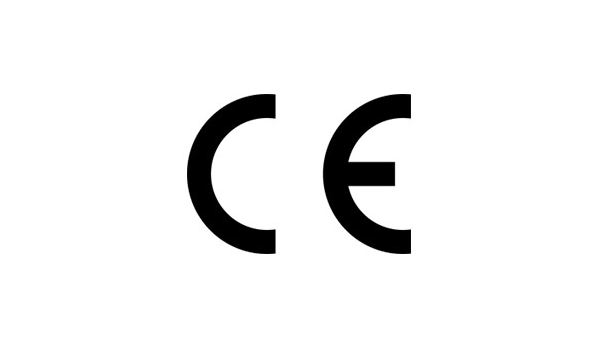
You should permanently affix the CE marking onto your toys, packaging, or an accompanying leaflet (which could also include instructions for use, for example). |
| Product traceability | The directive mandates the provision of product traceability information, which should include:
|
| Warning labels | You should provide general warnings (e.g. regarding age, abilities, weight, and adult supervision) with your product.
Activity toys in particular, such as those intended for children to jump on, need to bear the warning “Only for domestic use”, as mandated by Annex V of the Directive. |
General Product Safety Regulation
The General Product Safety Regulation establishes safety requirements for consumer products. The regulation applies to some types of trampolines (e.g. gym trampolines), for which there are harmonised standards.
The regulation generally requires you to:
a. Ensure your product’s compliance with relevant standards, via testing
b. Provide technical documentation, and user instructions
c. Properly label your product (e.g. age suitability, warnings, traceability information)
Note that, even if here we provide some examples of standards for trampolines, more standards may exist.
EN 13219 – Gymnastic equipment – Trampolines – Functional and safety requirements, test methods
EN 13219 is harmonised under the General Product Safety Regulation. This standard applies to five types of trampolines used under the supervision of qualified individuals.
However, it does not cover mini and home-use trampolines. This could be because EN 71-14 already covers domestic-use trampolines.
EN ISO 25649-6 – Floating leisure articles for use on and in the water – Part 6: Additional specific safety requirements and test methods for Class D devices
EN ISO 25649-6 is also harmonised under the General Product Safety Regulation. The standard sets safety requirements and methods for testing floating leisure products used in and on the water, such as water trampolines.
EN ISO 23659 – Sports and recreational facilities – Trampoline parks – Safety requirements
EN ISO 23659 is not harmonised under the General Product Safety Regulation. However, trampoline park manufacturers and installers should still use this standard to determine the compliance of trampoline parks, trampoline park areas, and their components.
This standard establishes safety requirements regarding the design, construction, inspection, and maintenance of trampoline parks as well as their components. It also sets minimum operating requirements to ensure safety when used during educational, training, and recreational purposes.
Documentation
Here we list the key documents that the regulation requires you to provide.
| Title | Description |
| Technical documentation | The regulation mandates you to create technical documentation for your product, and provide the following:
|
| Instructions | You need to provide instructions with your trampoline. It should contain information concerning the following topics:
|
| Test reports | Importers and manufacturers should get their trampolines tested against the requirements of the regulation. If the product passes the test, they get a test report that should be provided as part of the technical documentation. |
Labelling requirements
The General Product Safety Regulation mandates you to provide labelling on your product, its packaging, or an accompanying document, such as the instructions sheet.
| Title | Description |
| Product traceability information | You need to provide product traceability information, which should contain:
|
| Warnings | The regulation mandates the provision of warnings, which would depend on the characteristics of the product. Note that, in some cases, standards provide warning requirements |
REACH Regulation
The REACH Regulation sets substance restrictions on consumer products. For instance, the PVC components of a trampoline may contain phthalates such as DEHP, which are restricted by REACH.
REACH-restricted substances may harm human health and the environment. As such, you need to get your trampolines tested to ensure the product does not contain restricted substances above the permitted limits.
Restricted substances (Annex XVII)
Annex XVII lists restricted substances that may exist in the materials used to manufacture trampolines, such as:
a. Polycyclic-aromatic hydrocarbons (PAH) – restricted to 0.00005% in activity toys (e.g. trampolines) if their rubber or plastic parts repeatedly come into short-term contact with human skin
b. Cadmium – banned from use in polypropylene material that may exist in the fabric mats of trampolines
c. Bis(2-ethylhexyl) phthalate (DEHP) – restricted to 0.1% by weight of the plasticised materials of toys, which may include trampolines
SVHC Candidate List
The Substances of Very High Concern (SVHC) Candidate List contains substances that could permanently harm human health and the environment. You should submit a SCIP notification to ECHA if your product contains more than 0.1% of a specific SVHC.
Trampolines may contain SVHCs, such as:
a. Zinc – used as a coating product, may exist in the metal springs of trampolines
b. 4-(1,1,3,3-tetramethylbutyl)phenol, ethoxylated – may exist as polypropylene in the trampoline bed as a flexible plastic
Persistent Organic Pollutants (POPs) Regulation
This regulation establishes restrictions on POPs, including POPs present in consumer products. According to the ECHA, POPs bioaccumulate in and harm living organisms (e.g. humans) and the environment, and can be transported around the world.
The materials used to manufacture trampolines, such as plasticisers, may contain restricted POPs. Here are some examples:
a. Alkanes – used as secondary plasticisers in PVC, and in waterproofing and fire-retardant paints
b. PCB – may exist in stainless steel springs for trampolines
c. PentaDBE – may be used as a flame retardant in the foam pits used in trampoline parks
You should get your trampolines tested to ensure they do not contain restricted substances.
Recalls and compliance risks
Trampolines may be dangerous as both children and adults may get severely injured if the product does not comply with safety requirements such as the ones outlined in this guide.
On the Safety Gate, we found several cases of trampolines that were withdrawn from the market due to risks caused by non-compliance with the requirements of the Toy Safety Directive and EN 71-14. Here are some examples of causes that lead to a recall:
a. The safety net is too low, which may allow children to jump over it
b. The gap between the mat and padding is too large, which may cause the child to get trapped or hit the floor
c. The distance between the ground and the mat is too low, which may cause the child to hit the ground
d. The trampoline is not sufficiently stable
e. The product lacks adequate safety information, instructions and warnings
We also found a case of trampoline that was recalled because of non-compliance with the General Product Safety Directive, which has now been replaced by the General Product Safety Regulation.
In this case, the cause for the recall was that the springs could break because they were not resistant enough.
Lab Testing
Some regulations (e.g. the General Product Safety Regulation) require product testing. Some others do not strictly mandate it. You should nevertheless get your product tested against relevant standards and regulatory requirements to ensure that it is safe. If your product passes lab testing, you should receive a test report proving your product’s conformity to the requirements.
| Regulation | Lab testing |
| Toy Safety Directive | This directive sets safety requirements for toys and considers trampolines to be activity toys. It requires these products to undergo testing to the harmonised EN 71-14 standard to prevent accidents. Note that, according to the product, it is possible that other testings are also necessary. |
| General Product Safety Regulation | The General Product Safety Regulation mandates that trampolines undergo testing to ensure product safety. This could include mechanical and physical testing of the trampoline structure and its components. |
| REACH Regulation | The REACH regulation sets restrictions on substances used in consumer products, such as trampolines. You need to get your product tested to ensure that the materials used for the product do not contain any restricted substances (e.g. PAHs) above the allowable levels. |
| Persistent Organic Pollutants (POPs) Regulation | This regulation also establishes restrictions on substances. You should have your trampolines or their components tested to make sure they do not contain any restricted substances above the permitted limits. |
Trampoline testing companies
Here we list some companies that claim to test trampolines against the requirements of various EU regulations, such as the Toy Safety Directive:
- Intertek
- SGS
- QIMA
- TÜV Rheinland


